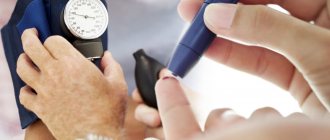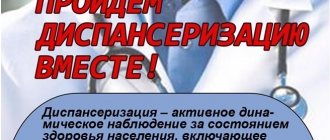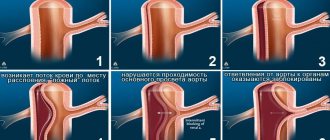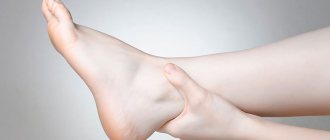Methods for preventing arterial hypertension
October 2, 2020
It is very important for patients suffering from arterial hypertension to promptly consult their doctor to decide on the correct choice of medication. However, it should be remembered that the success of treatment depends not only on the doctor. Patients often wonder whether there are methods for preventing arterial hypertension; can the patient himself actively participate in the treatment process?
In the prevention of arterial hypertension, an important role in some cases is given to ways to overcome arterial hypertension without the use of drugs, that is, non-drug treatment methods.
Firstly, such approaches are recommended for the prevention of increased blood pressure, especially in cases where, when measured, the blood pressure level is just beginning to exceed the threshold of normal values (130/85 mm Hg), that is, when hypertension has not yet fully manifested itself. If, during an accidental measurement or overwork after a busy day, blood pressure reaches 130-139/85-89 mmHg, this is a good reason to pay attention to yourself and think about what features of the current lifestyle and ingrained habits may lead to the development of hypertension.
The use of non-drug approaches is especially important for individuals with existing concomitant risk factors for the development of cardiovascular complications.
This, as we already well know, is the age and gender of the patients: men over 55 years of age and women over 65 years of age, high cholesterol levels in the blood, diabetes mellitus, smoking, obesity, and a sedentary lifestyle.
In addition, it should be remembered that non-drug methods can and should be used not only to prevent the development of arterial hypertension: they are recommended for all patients, regardless of the severity of arterial hypertension and concomitant drug treatment, since they are aimed not only at preventing the development of arterial hypertension , but also to enhance the effect of medications already taken and reduce the number of medications taken.
The answer to the question of what range of measures are covered by non-drug ways to overcome arterial hypertension lies in the concept of a person’s “lifestyle,” which includes lifestyle, attitude towards oneself and others, established habits and addictions.
Compliance with recommendations for a healthy lifestyle requires the patient to reconsider and overcome the usual daily routine and show willpower. First of all, this is a change in the quality of life: you need to force yourself to give up a sedentary lifestyle and bad habits. Patients with high blood pressure are not recommended to work night shifts, noisy environments, work associated with frequent business trips, or psycho-emotional overload. The correct daily routine includes reducing the time spent working with the computer, avoiding prolonged viewing of TV shows, and getting a good night's sleep.
An important role is played by increasing physical activity. Regular physical training is useful both for preventing high blood pressure and for treating arterial hypertension. In untrained individuals with normal blood pressure who lead a sedentary lifestyle, the risk of developing arterial hypertension is 20-50% higher than in those who lead a more active lifestyle. Meanwhile, physical training, even if it is moderate, can reduce blood pressure by 5-10 mmHg. Art. Low-intensity aerobic exercise helps lower blood pressure. Such soft loads as fast walking, swimming for 30-45 minutes. 3-5 times a week, more physiological than intense forms of exercise, such as running. So-called static isometric loads, such as exercises with a barbell, are not recommended. It is important to know that carrying and lifting heavy objects can increase blood pressure.
You should know that the appearance of shortness of breath, pain in the chest, in the heart area, or interruptions in heart function during physical training requires immediate cessation of exercise and consultation with a doctor. The method of physical activity and increasing physical activity must be agreed upon with the doctor and physical therapy methodologist.
In addition to physical activity, dietary nutrition plays an important role in improving lifestyle. A necessary condition for proper nutrition is regular meals, at least 4 times a day. Don't overeat before bed. You should have dinner no later than 2 hours before bedtime. A late dinner brings the digestive glands into an active state, blood moves to the abdominal organs, which can disrupt a good night's rest and lead to breathing problems, heavy dreams, and an excess of unspent calories leads to obesity. As a rule, overweight people more often suffer from arterial hypertension, atherosclerosis of the blood vessels of the heart and brain, they can develop diabetes mellitus quite early, the spine, joints of the arms and legs suffer.
Fat deposition in the abdominal area (the human figure resembles an apple) is especially unfavorable for the body: this type of obesity in itself is a risk factor. Weight loss helps lower blood pressure in most patients with hypertension whose body weight is more than 10% higher than normal. Persons with arterial hypertension who are overweight are recommended to consume a sufficient amount of vegetables (500-600 g per day) and fruits - 300 g per day (with the exception of bananas, grapes, figs), including low-fat cottage cheese, lean meats and fish. With high blood pressure and a tendency to edema, try to limit fluid intake (water, tea, soup, fruit juices) to 1-1.2 liters per day. It is recommended to drink only fruit juices and waters that are made without added sugar.
Eliminate products made from premium flour from your diet. Significantly limit sweets (sweets, cakes, ice cream) - these products turn into fats in the body. Limit animal fats and cook food in vegetable oil. It is advisable to replace fatty varieties of beef and pork in the diet with poultry (chicken, turkey), removing fat and skin during processing (they contain a lot of cholesterol). Include seafood in your diet more often, increase your consumption of fish, especially sea fish.
Particular attention should be paid to dietary restrictions on table salt. It has been established that reducing salt (sodium chloride) intake from 10 to 4.5 g/day (flat teaspoon) leads to a decrease in systolic (upper) blood pressure by 4-5 mm Hg. Overweight patients and the elderly are especially sensitive to reducing salt intake: limiting salt to 2 g/day leads to a significant reduction in the number of blood pressure-lowering pills that these patients previously took. In order to limit salt, it is recommended to cook food without salt (2-3 grams are contained in food products), and the finished dish can be slightly salted. You can also use low-sodium salt, which is available in pharmacies and health stores.
When setting a goal to change your diet, you should adhere to the following important principle: try to eat more fruits and vegetables rich in potassium (dried fruits are rich in them) and magnesium (bran, buckwheat and oatmeal, nuts, beans).
It should be remembered that changing the nature of nutrition should become permanent: short-term dietary measures will not lead to the desired result.
The combination of diet with regular physical training is an effective way to prevent arterial hypertension and an important part of the treatment of patients suffering from hypertension, especially in the initial stages of the disease.
Improving your lifestyle is also associated with giving up some habits, called “bad” ones.
First of all, smoking, it 2-3 times increases the risk of developing coronary heart disease and cerebral stroke in people with arterial hypertension. Quitting smoking is one of the effective ways to reduce risk in patients with hypertension, an integral part of measures to prevent cardiovascular complications.
Regular excessive consumption of alcohol leads to increased blood pressure, especially in people for whom this bad habit is the norm. World Health Organization
(WHO) indicates the limit of an absolutely dangerous dose: 60 ml of ethanol for men and 50 ml for women. In terms of alcoholic drinks, this is respectively 180 or 150 g of vodka, or 1.5 beer, or 0.5 liters of wine per day. Beyond these boundaries, critically dangerous consumption begins. However, according to epidemiological data (that is, based on the results of long-term observations of large groups of the population), it is clear that already with 30 ml of ethanol per day, an increase in mortality begins. This is 90 g of vodka, 800 ml of beer or a large glass of wine. That is, by drinking so much, a person is definitely harming himself. Those being treated for hypertension should also remember that alcohol and many medications that lower blood pressure are incompatible.
For those who are seriously thinking about their lifestyle and want to change it, it is important to know that when combining measures such as weight loss, regular physical exercise, limiting salt and alcohol intake, their effectiveness increases and the chances of not developing hypertension increase. and avoid its dangerous complications.
However, when starting a set of non-drug methods for the prevention and treatment of arterial hypertension, you must clearly understand that your efforts should not be short-term measures. The effect can only be achieved with regular and long-term implementation of these methods.
Tags:
- Hypertension
- cardiovascular diseases
- Heart
- Hypertensive crisis
To leave a comment you must be an authorized user
Diagnosis of hypertension
The presence of hypertension is determined by a general practitioner or cardiologist. To do this, it is enough to record high blood pressure readings during two examinations. After this, the patient is carefully examined to determine the stage of hypertension. The following diagnostic methods are used:
- 24-hour blood pressure monitoring;
- ECG, EchoCG;
- Ultrasound of the heart, kidneys, adrenal glands;
- laboratory diagnostics to determine hormonal levels, the functioning of the kidneys and adrenal glands, other organs and systems;
- arteriography and Dopplerography allow you to study the condition of blood vessels;
- consultations with specialists (ophthalmologist, neurologist and others).
Prevention of hypertension
There are several effective measures that can prevent the development and even cope with the initial stage of hypertension. They are simple and accessible to everyone.
- Optimal physical activity. No claims to records or high sport. Regular daily exercise and physical exercise, long (at least two hours) walks. Swimming, Finnish walking, skiing.
- Reducing salt intake. Maximum: level teaspoon (taking into account the salt that is in finished products);
- Exclusion from the diet of animal fats and foods rich in fast carbohydrates.
- Mental harmony. Minimizing all stress factors. A positive attitude and the ability to see the positive in everything.
- Quitting alcoholic beverages and smoking.
- Weight control. A waist size above 100 cm is considered critical. But it is better to strive for an average weight typical for your age.
If you already have established hypertension or you just suspect you have it, be sure to get recommendations from an experienced specialist. Sign up for a consultation at the MAJOR CLINIC family clinic to undergo a full examination and clarify the diagnosis. The doctor's advice will help you take control of your health and prevent the development of dangerous complications.
Sign up for an appointment with the doctor
Treatment of hypertension
The disease requires careful selection of drug therapy, which is prescribed for life. Medicines from several groups are used. Ready-made treatment regimens are adapted for each patient, titrating the dose and frequency of administration. It is optimal to select medications under the supervision of a doctor in a hospital, including a one-day hospital, so that the doctor has the opportunity to assess the effectiveness and good tolerability of the prescribed therapy.
A treatment regimen in which the patient feels well and his blood pressure is within the normal age range is considered suitable.








